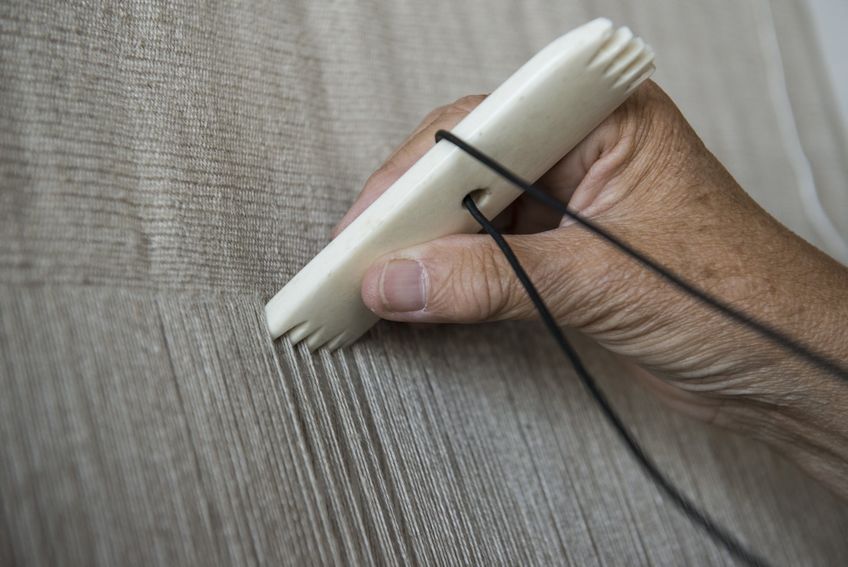The weaver
Weaving a sail of flax for the Gislinge Boat
Flax has been used to produce textiles in Scandinavia since the Iron Age. Transforming the plant into fibres that can be spun, and then woven, is a long and complex process.
- The plant stems are pulled by hand, so the end of the stem remains intact
- The plants are rippled (combed) to remove the seeds from the stems
- The flax is then retted (submerged in water for 1-2 weeks, or laid on a meadow for 4-8 weeks), to loosen the fibres from the pith
- The stalks must dry out before being broken to separate the woody pith from the fibres
- The fibres are then scutched (beaten) to remove the small fragments of pith
- Lastly, a hackle (comb with long iron teeth) is used to remove the final impurities and straighten the fibres
- The flax is now ready to be spun
This is the first time the Museum has produced a handwoven sail from flax. No sails made from flax have yet been found from the Iron or Viking Ages. However, other archaeological evidence demonstrates that flax was grown and processed.
The sail is made up of five long panels, which will be sewn together to make the finished 10m2 sail. The Museum’s weaver will produce one of the panels; the other four panels are being woven by weavers from the Institute for the Blind and Partially Sighted. When complete, the sail will be impregnated to help prevent rot.
Weaving a sail of wool for Ottar in 1999
Today Ottar sails with a sail made of flax, but originally the sail was made of wool.
- The wool for the 90m2 sail came from as many as 200 "Spelsauer" sheep - descendents of Norwegian wild sheep.
- 157 meter of wollen fabric with a width of 65 cm was woven.
- When dry it weighed 90 kilos.
- A 7850 hours were spend om weaving. That's the equivalent of 4 ½ years of work for one person.
To make sure the sail repelled water and that it was even more wind-proof, the finished-woven sail was treated with raw ochre and a mixture of horse mane fat and, water in the ratio of 1:10. The mixture was boiled, cooled down and then rubbed into the sail using glass stones. It is interesting to note that it was the ochre that made the sail tight - and yellow - not the fat. After the sail had been in use for a certain time beef suet was kneaded into the front side to make the surface smooth.
